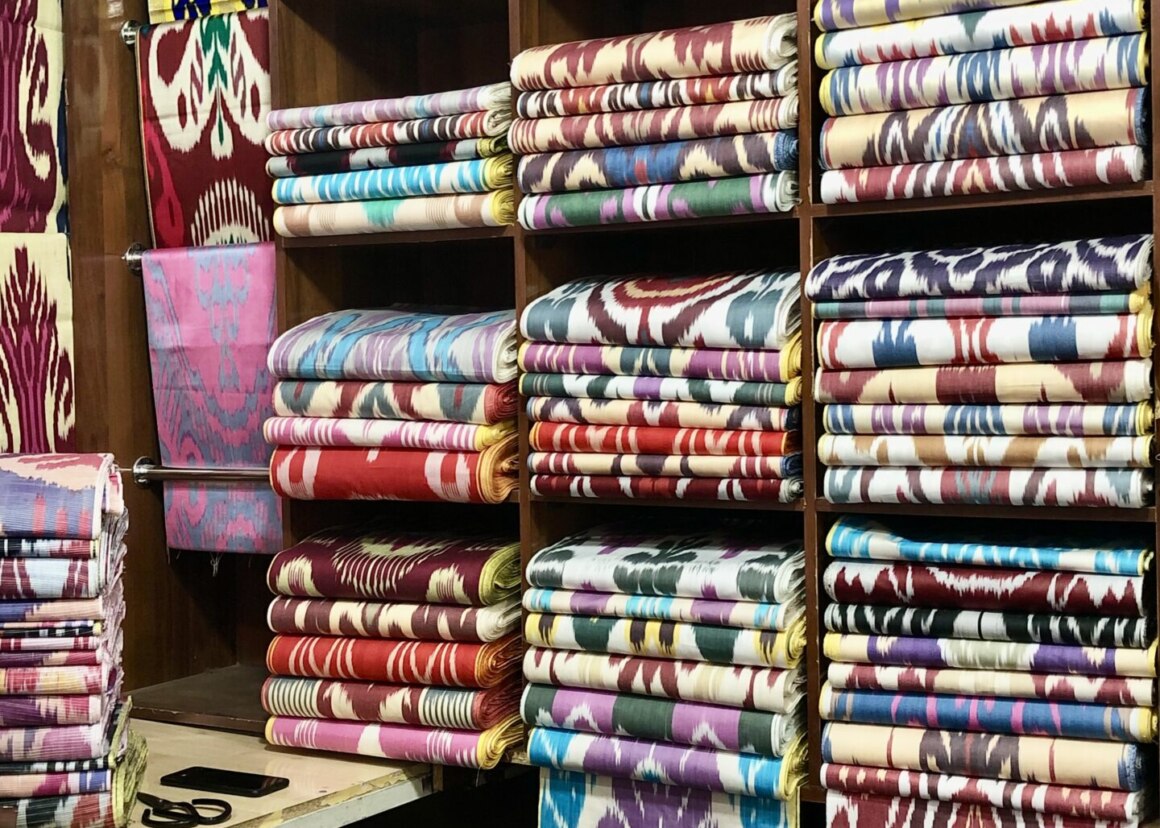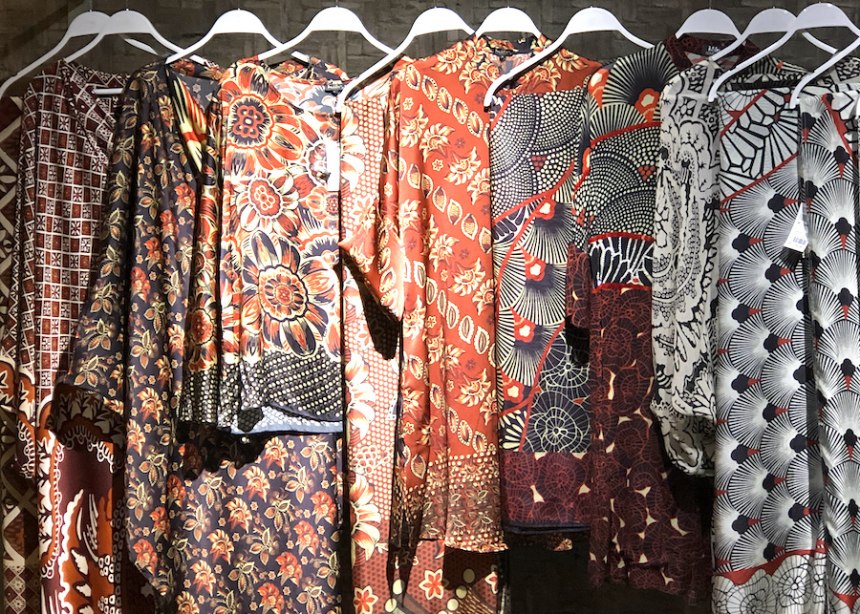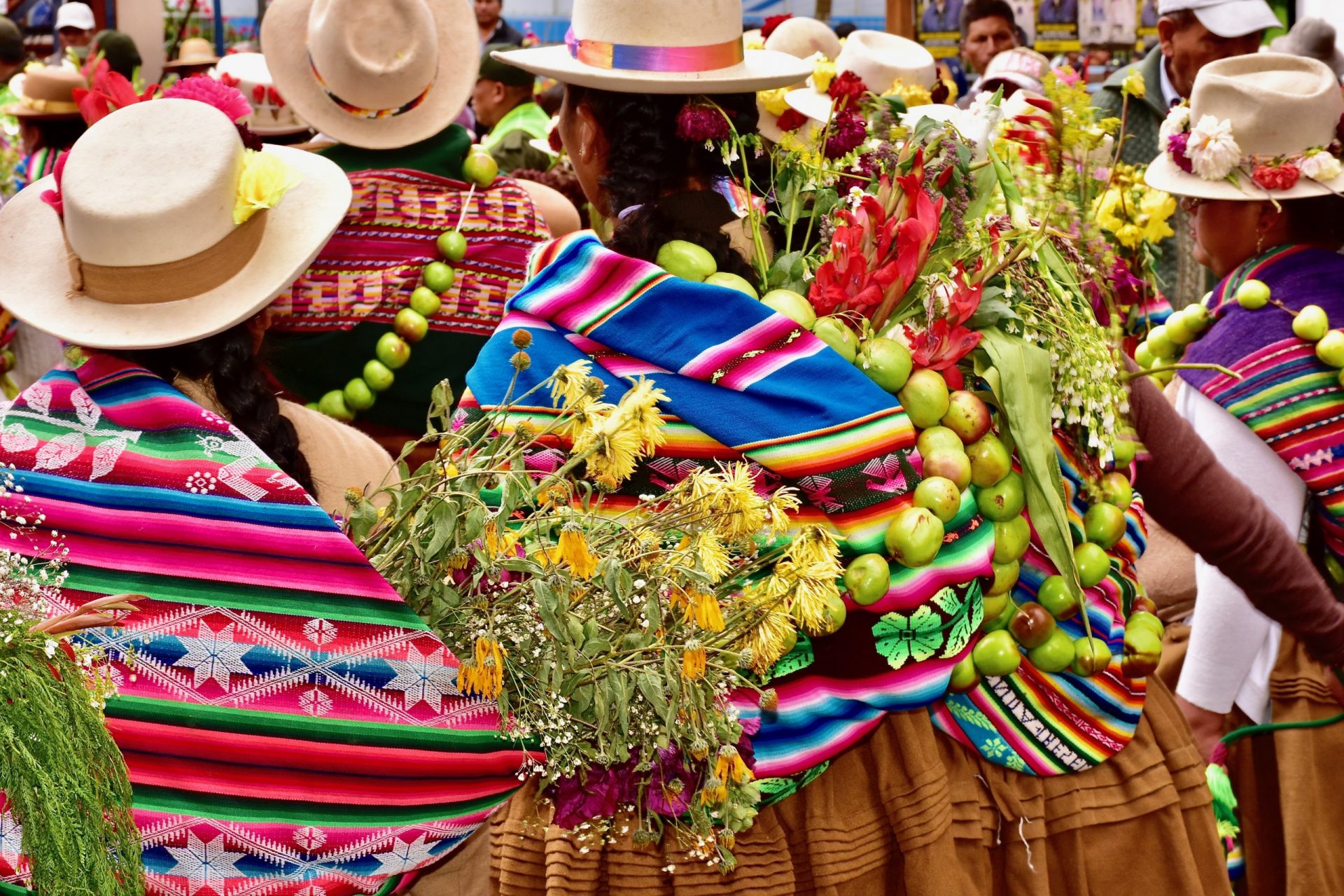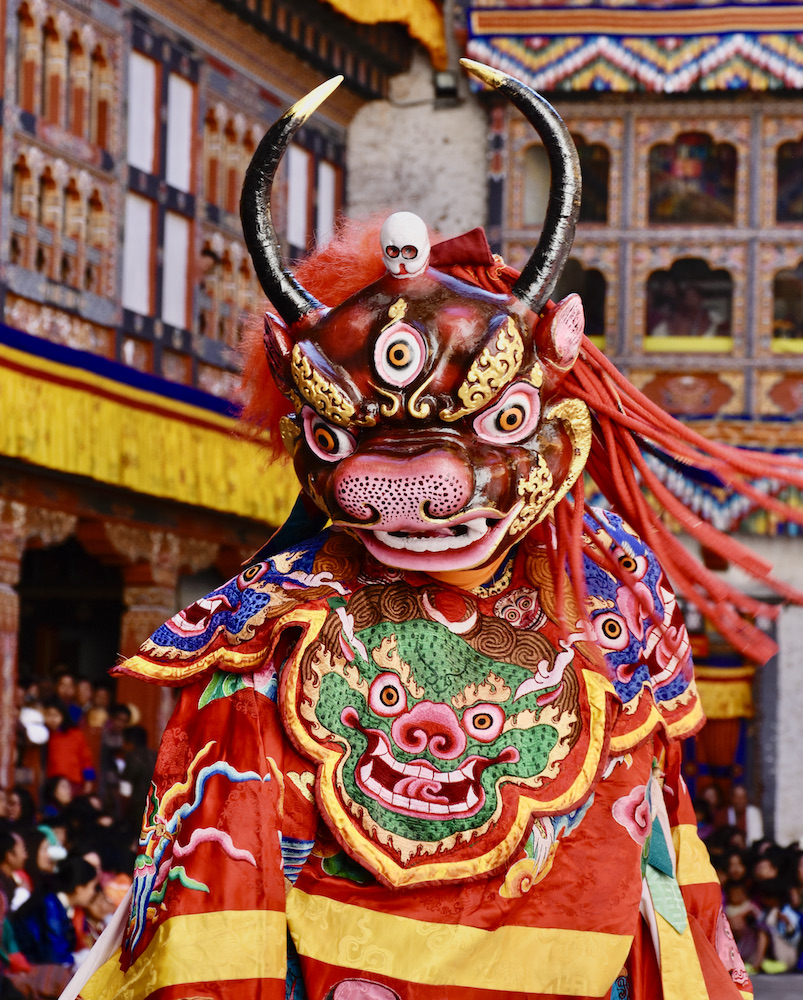Travelers are so surprised by the amazing variety of textiles, clothes, and art to buy in Uzbekistan that I decided to show some of what is available before you travel.
Often we are asked, “How much money should I bring for shopping?!”
And my answer is always, “Bring as much as you can afford, in US dollars, and you can take home whatever is left over!”
The country abounds in artisans creating both traditional and innovative items, to wear or to decorate your home. There is also a limited number of vintage ethic textiles for your collection.
NOTE: Prices are approximate and in US dollars.
Traditional Clothing and Ikat
Let’s start with the gorgeous clothes. The best selection is undoubtedly in Bukhara and Samarkand, in little boutiques and in the bazaars. You’ll find jackets, coats, kimono-like dusters, and long vests in both printed and woven ikat cloth. Naturally clothing made from factory-printed fabric (often rayon) is inexpensive compared to true resist-dyed ikat-patterned cloth.
Clothes made from woven ikat are typically made of cotton or silk fabric (or a mixture) with colorful cloud-like patterns and striking designs. It is possible to ask tailors in several boutiques to copy a garment in a different fabric or size.
The cost of woven ikat jackets and coats depends on the designer, the complexity of design, and the fabric. For example:
- Short, unlined jacket: around $40 (cotton ikat)
- Unembellished, lined pure silk ikat coat: $200 -450+
- Hand-embroidered jacket and coat prices below the photos.
- Made-to-order items: finished in several days (in Bukhara or Samarkand). You choose the fabric; they measure you and pricing is reasonable.
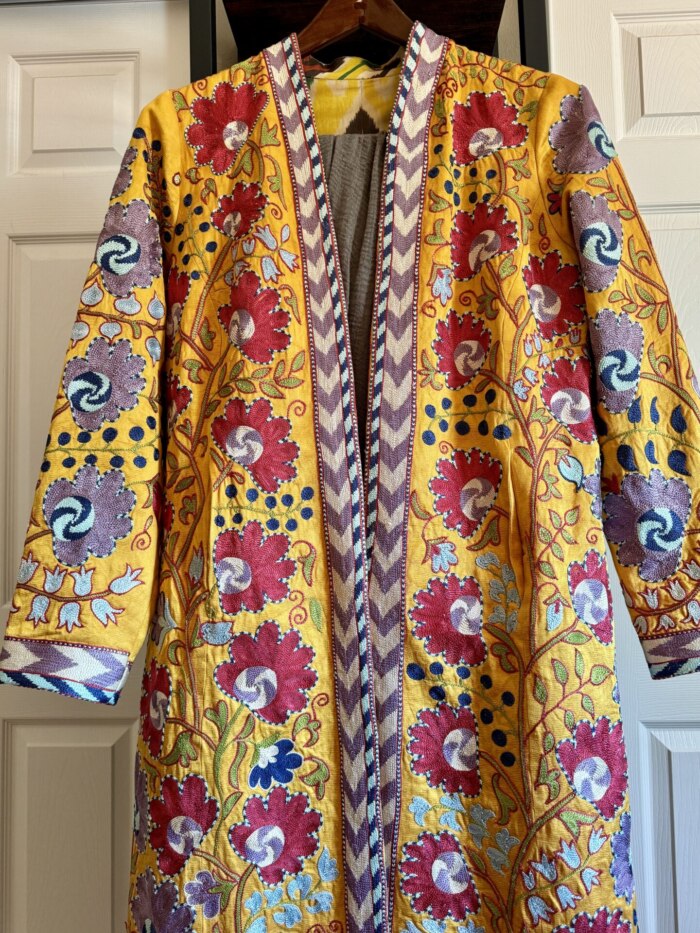
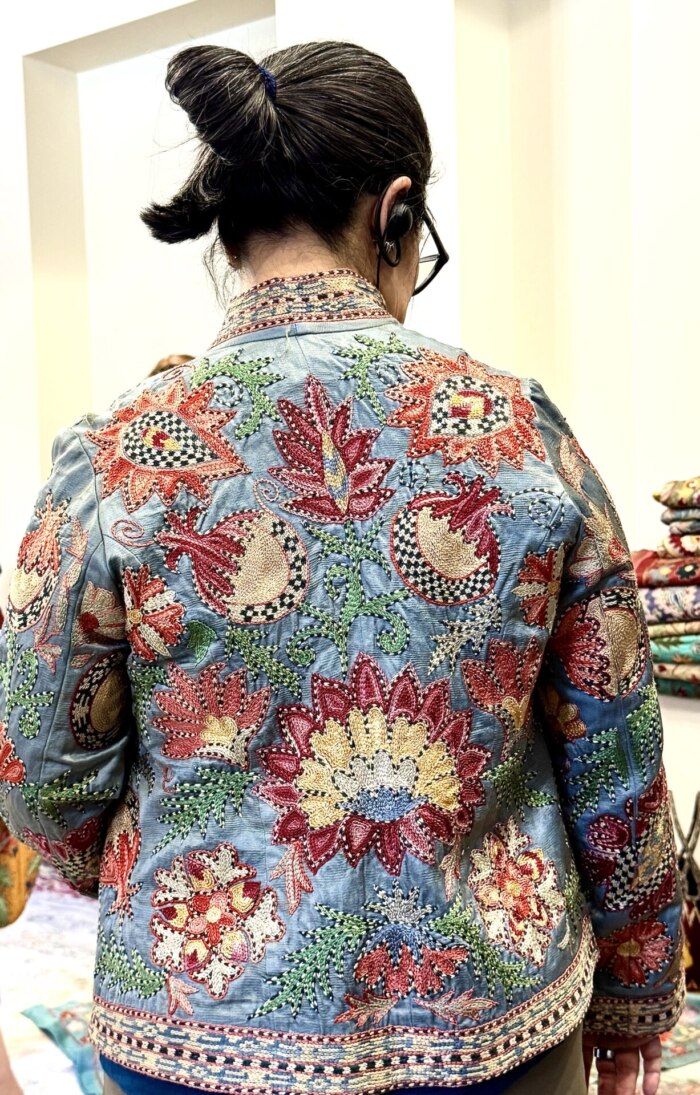
Treasured coats and jackets from a couple of groups of expert hand embroiderers are solidly embellished with silk thread in traditional designs, on top of hand or machine-woven silk fabric. Smooth pure silk ikat lines these masterpieces.
Madina Kasimbaeva of Tashkent designs gorgeous coats and jackets that are embroidered by her team. Her elegant coats are worn by illustrious First Ladies and other women with exquisite taste. The dynamic Madina also teaches embroidery classes and guides the women in color choice for her elegant garments. Sanjar Nazarov in Bukhara also designs beautiful coats and jackets (above) that are embroidered by local women. Both designers use silk threads that have been dyed with natural colors such as onion skins and indigo.
Pricing for hand-embroidered jackets and coats:
- Solidly hand-embroidered coat: $1000 -$2000
- Hand-embroidered jackets: $500 and up
One boutique in Samarkand called Happy Bird is worth checking out for the unique art-to-wear coats, embellished with trim, beading and tassels. Approximate Happy Bird prices:
- Very detailed versions: up to $1200
- Embellished coats with trim and beading: $300-$600
Keep in mind: Loose cotton or rayon pants and lightly quilted jackets in printed ikat patterns show up in the markets of many towns. These are pretty, but not necessarily made in Uzbekistan; they cost between $15 and $40. Bright, pretty scarves in a huge variety of fibers and patterns are everywhere in tourist markets; often they’ve been imported from India or China.
Traditional Textiles – New and Vintage
In some markets it’s possible to find older textiles such as men’s and women’s four-sided caps, embroidered Lakai door decorations, pieced patchwork Lakai panels, and triangular, fringed pieces used to cover a stack of mattresses. Large new or old pieces of suzani embroidery or needlework panels can be found inexpensively in the Urgut market (near Samarkand), with price of course depending on the quality and condition of the pieces. Skillfully embroidered new and antique suzanis with tiny, neat stitches appear in exclusive shops and galleries.
- Finely embroidered with silk thread – large gallery pieces: $400 -1000
- Vintage suzanis with obvious wear: $25 -200
- Cotton muslin suzanis with large stitches $20 -30
Inexpensive suzanis around 2′ x 3′ on cotton muslin with large ‘galloping stitches’ (often with pomegranate motifs) are found in tourist destinations. Obviously purchasing a suzani depends on your discerning taste and budget!
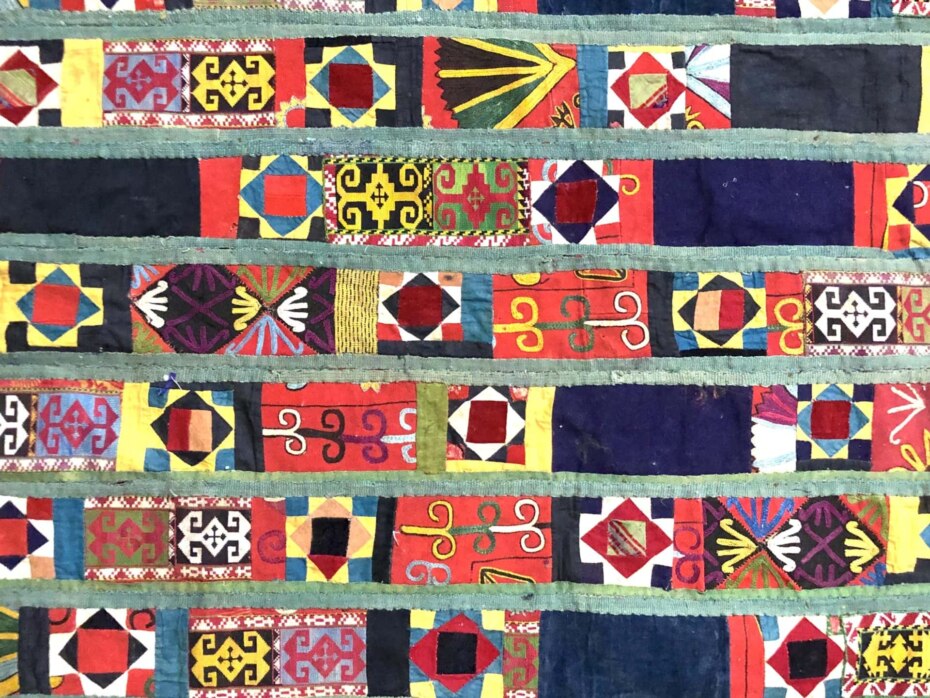
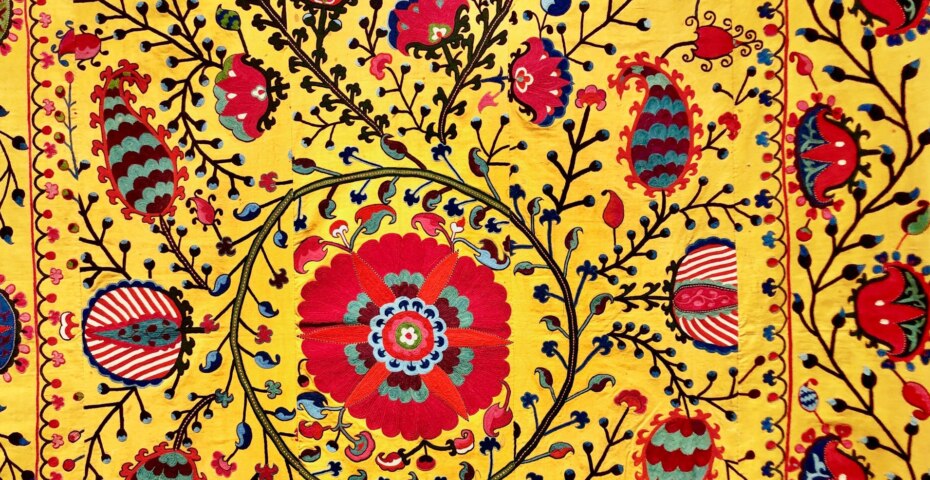
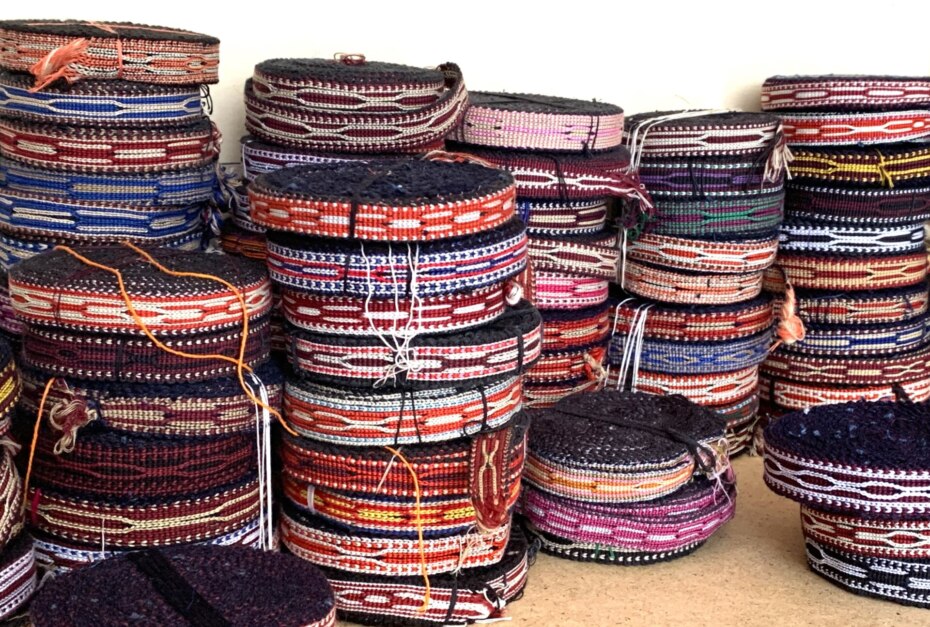
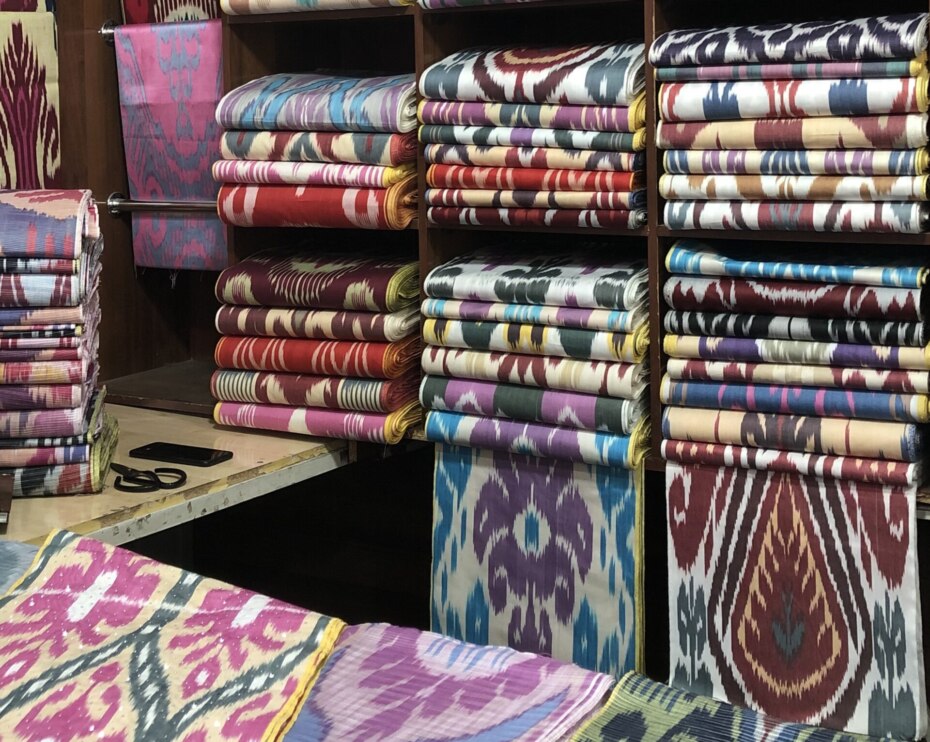
Less expensive, older suzanis might have frayed stitches, a hole or two, or might be a bit faded but if you are creative, you can make pillows or purses and other items using the undamaged sections. Rolls of pretty hand-manipulated (inkle-loomed) trim as shown above are around $6 per roll of about 5 yards.
Another popular item is the ikat yardage available inexpensively in an amazing variety, above. It’s found in shops and in Kumtepa Market in the town of Margilan, where it is made. Ikat fabric is also available in Bukhara, in less variety, but more expensive. Price range:
- Cotton ikat machine-woven, per meter (36″ or more wide) $2-4
- Cotton ikat hand-woven, per meter (15-18″ wide) $2-4
- Silk dyed warp and cotton weft blend, per meter $6-10
- Pure silk ikat per meter (18″ wide) $8-12
- Silk velveteen, handmade, meter (18″ wide) $10-25
The embroidered caps are four-sided and called doppi; tourist models and some typical versions are cross-stitched with bold patterns. These cost:
- Depending on age, fabric and decoration: $3-$35
- Vintage collector pieces like below: $100+
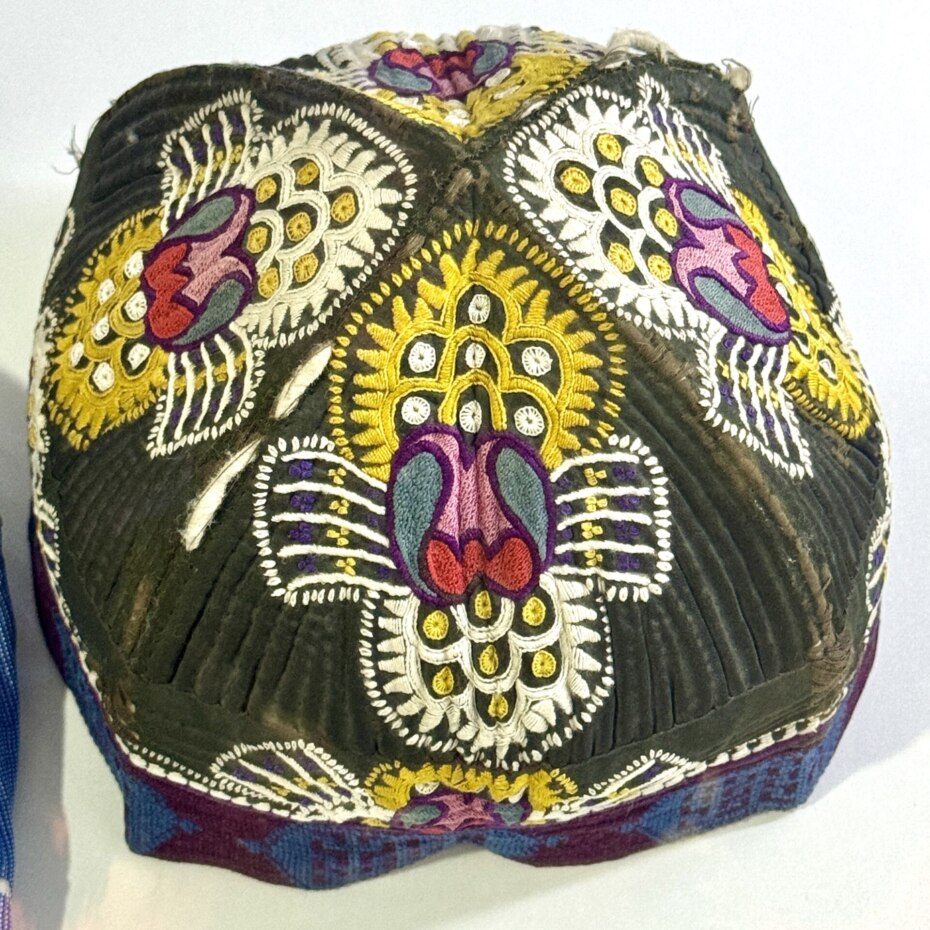
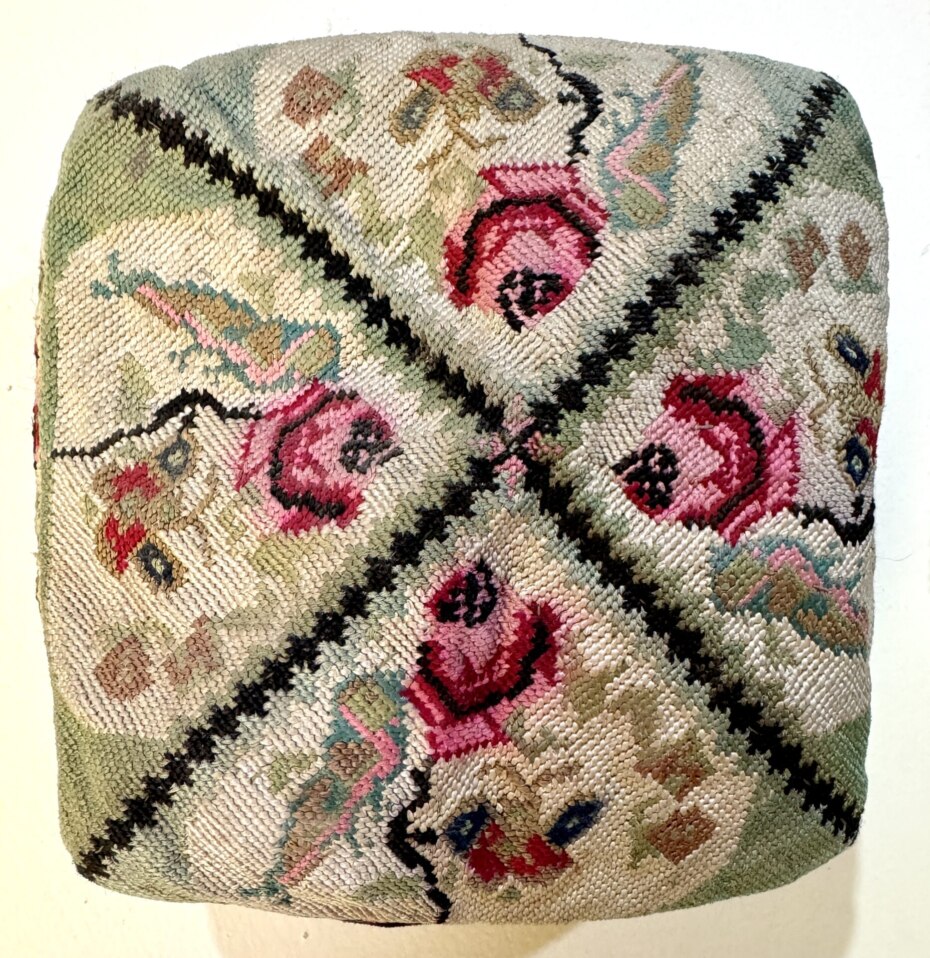
There are now even sewing machines that make a crossed-stitch mimicking hand-embroidery; naturally the machine-made items should cost less. (If you can see the back, a machine-stitched cap or suzani has white bobbin threads; on a handmade version, all the threads are the same color front and back, without bobbin thread. BUT, there is an old Singer machine that stitches a chain stitch without a bobbin thread.) If you like it and the price is reasonable, the embroidery technique isn’t so important!
The most expensive and intricately hand-embroidered vintage caps are sought after by textile collectors and are becoming rare; especially if the base fabric is velveteen and some beading enhances the embroidery.
A recent innovation is colorful purses and pillow covers with traditional cross-stitch designs, called iroki. These are usually embroidered by hand.
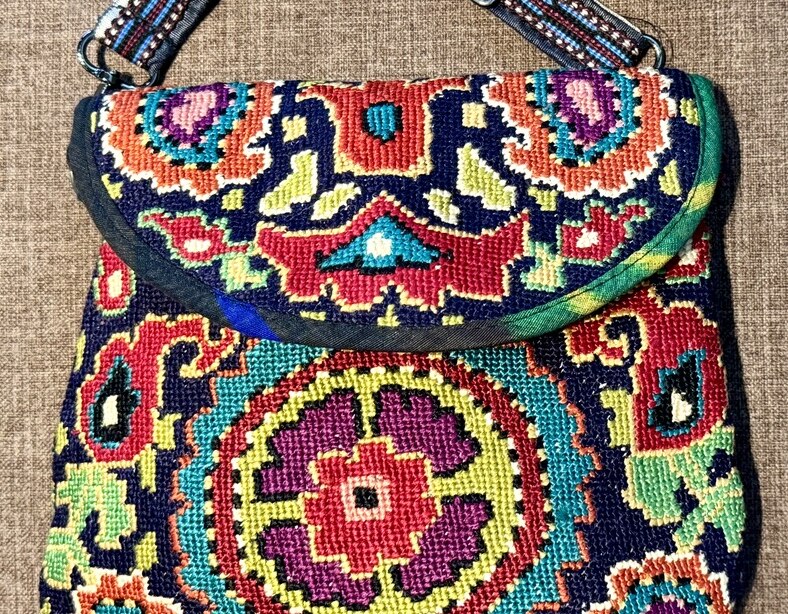

The Tashkent airport has a good selection of expensive cross-stitched bags if you need one at the last minute! The purses are made in a variety of shapes and sizes; hand-embroidered versions cost:
- Larger sizes and pillow covers: $80 -100+
- Passport-sized pouches: $35 -40
Rolls of trim in a variety appealing colors are available in the Urgut market; above right. These narrow trims often adorn coats, jackets, purses, etc. Each roll contains about 5 meters and costs around $5-10.
Markets such as Urgut also have loads of various smaller textiles such as woven wool yurt bands, fringes, hair decorations, intricate tassels, and more. It’s worth taking your time and seeing many pieces before spending lots of money on one item.
Ceramics – Old and New
Uzbek ceramics are another popular and treasured purchase. The town of Rishtan in Fergana Valley is home to talented families of potters hand-painting exquisitely-detailed plates and bowls with flowery patterns in blues and turquoise.
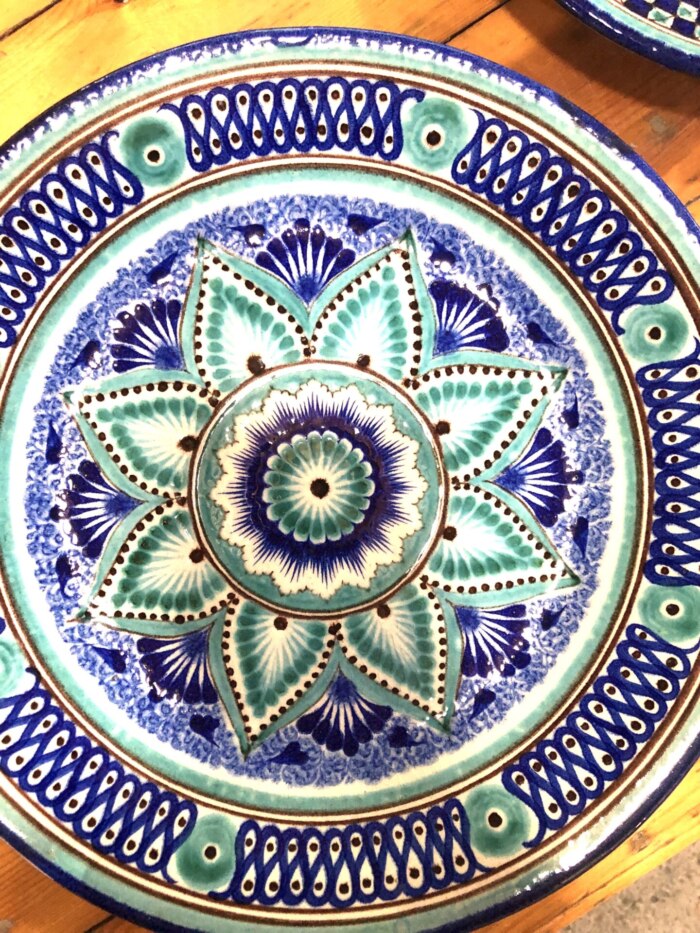
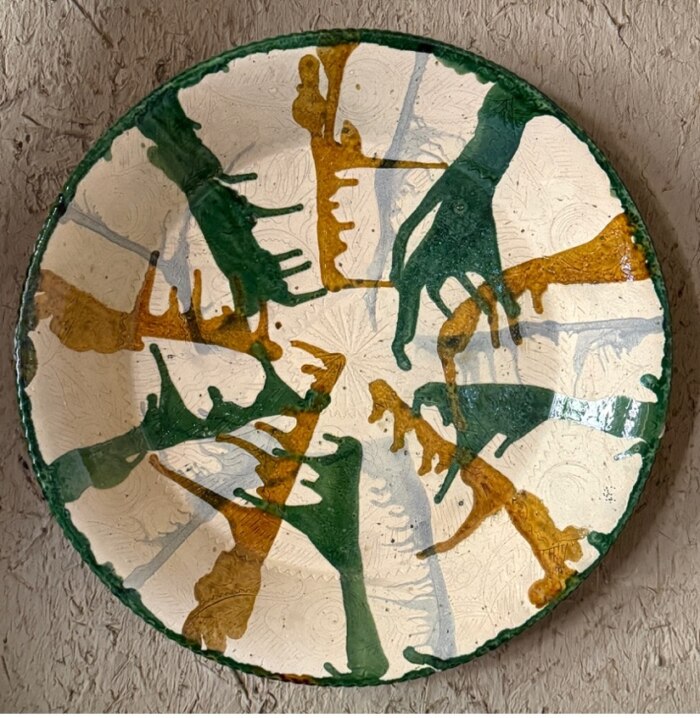
In Urgut, another family spins dishes and vases with poured glaze designs in warm brown and green tones. All the ceramic artists will securely pack your items in bubble-wrap. I have found that they travel well in the middle of a hard-sided suitcase, surrounded by clothes. Pricing for contemporary ceramics varies by size:
- Larger pieces: prices vary according to size and decoration:
- Big plates: $50 -200
- Small bowls: around $3 -5
- Cereal bowls: $20-40
Occasionally large Soviet-era vintage ceramic plates show up in shops; these are very appealing with their simple slip-trailed designs. Because of their relative rarity, they cost between $45 -$120.
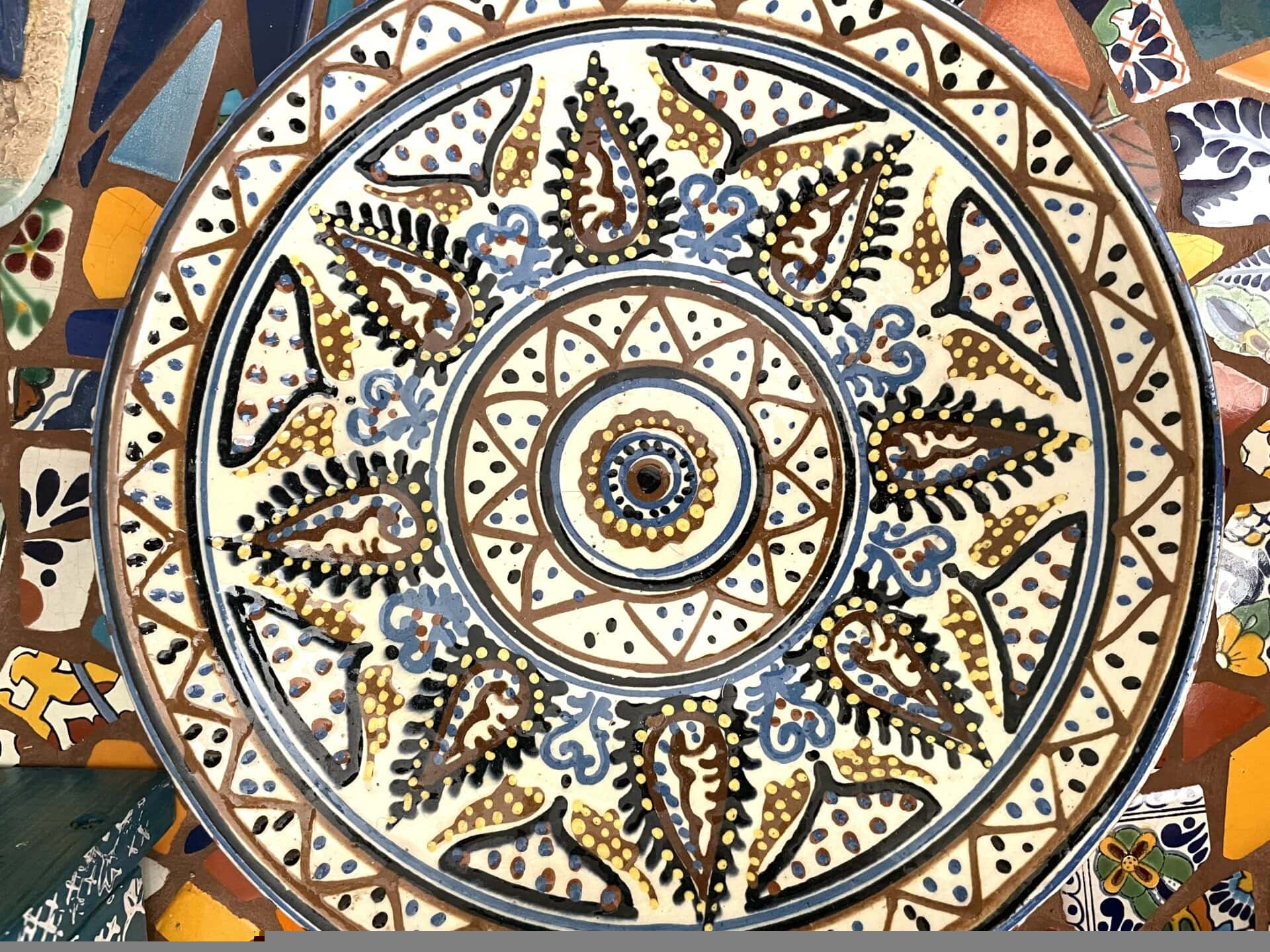
Baking Items and Tools
Bread stamps are another popular and traditional item to take home to foodie friends. Bakers stamp these spiky devices into raw bread dough to make patterns that show up best when the bread rises and is baked to a golden brown.
If you’re wondering what delicious breads these stamps are used for, check out our guide to What to Eat in Uzbekistan – you’ll discover the traditional lepeshka and other local specialties that bakers decorate with these tools.
Good selections of bread stamps with many designs are available in Tashkent’s Chorsu Market, the Bukhara bazaar, and in the Margilan produce market.
Pricing for these traditional tools:
- Large heavy stamps (6″ across): $20 -30
- Smaller stamps (2- 5″): $4-10
- Handles: turned walnut or poplar wood; walnut may be more expensive.
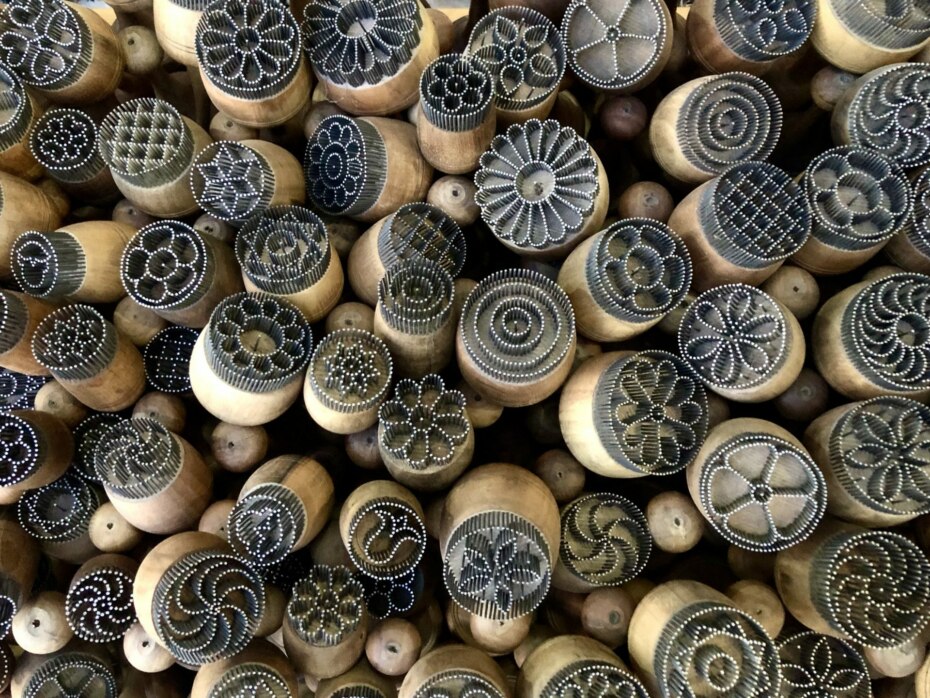
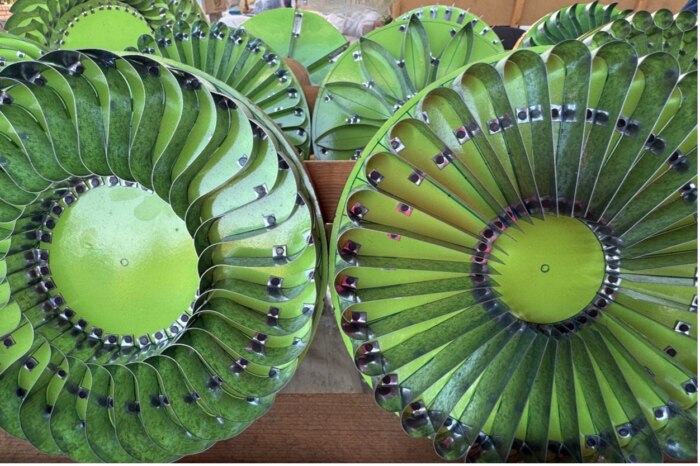
In the same area of the markets, vendors sell handmade round tin cutters to slice designs into the raw dough, above right.
Carpets and Rugs
Central Asian carpets have a long tradition as one of the sought-after Silk Road trade items. But later Russia’s industrial technology mania resulted in machine-made carpets. The value and appeal of carpet-making techniques by hand was thus forgotten. Now there are several prominent workshops reviving carpet-making in Uzbekistan. The largest is in Samarkand and was started by Afghani immigrants whose carpet tradition had not died out. Their workers on site or at home continue to make intricate wool or silk hand-knotted carpets. Women working at home also create ‘kilims’ or tapestry technique rugs; below, left.
An Englishman named Christopher Aslan also started a carpet revitalization project when he lived in the western Uzbekistan town of Khiva. Women make knotted pile rugs in the Khiva workshop and at home, creating both wool and silk versions. The unique designs from this workshop are taken from Khiva’s carved wooden door and ceramic tile patterns. We will visit both of these places to see the various labor-intensive steps in carpet production.
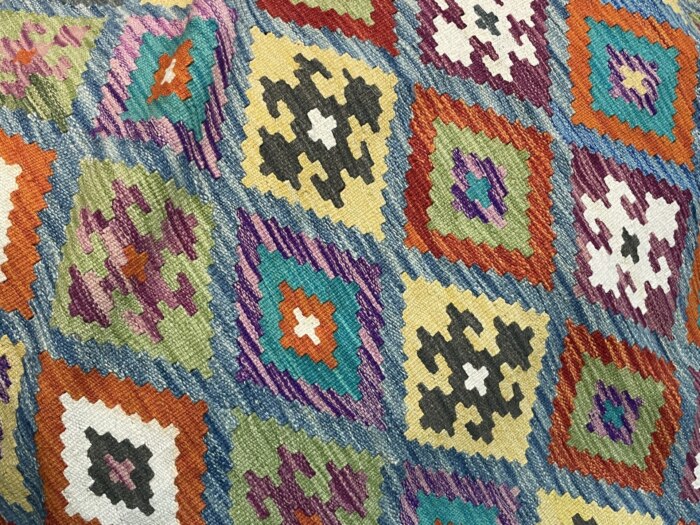
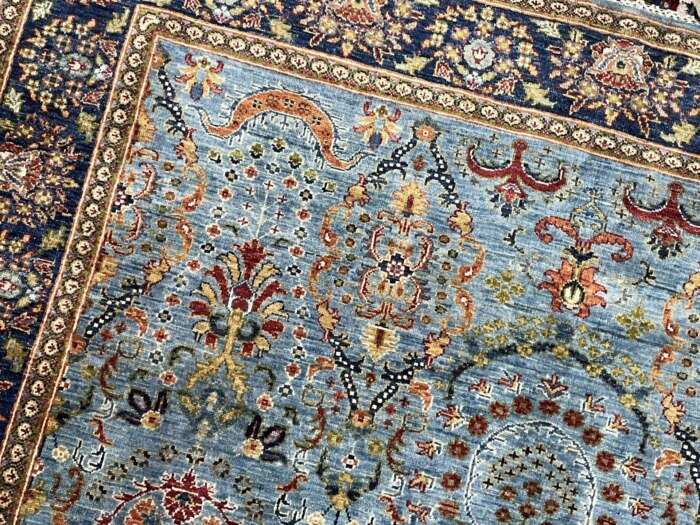
Whether you’re interested in textiles, ceramics, or traditional crafts, shopping in Uzbekistan offers unique treasures for every budget. From the markets of Bukhara and Samarkand to the workshops of Rishtan and Urgut, there is something for everyone to take home when you join one of our textile tours to Uzbekistan.
